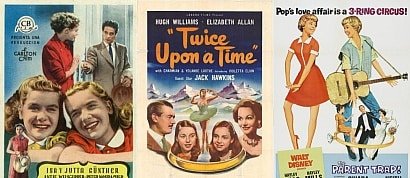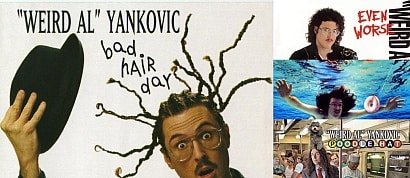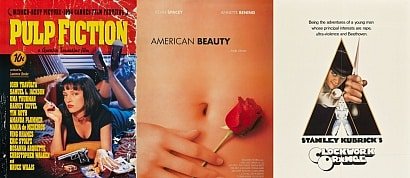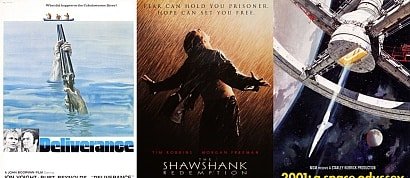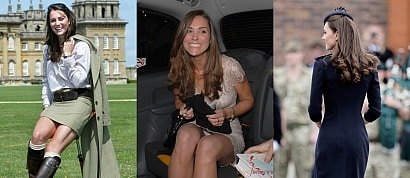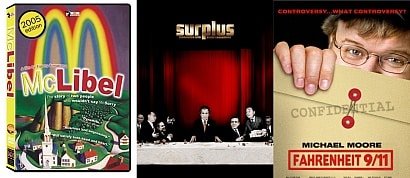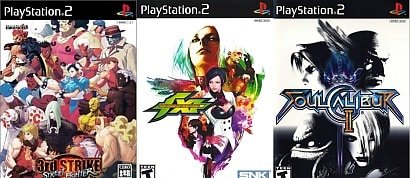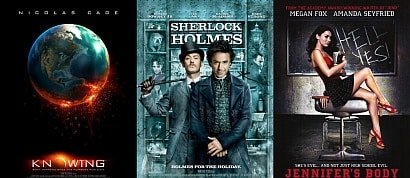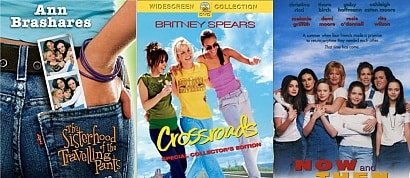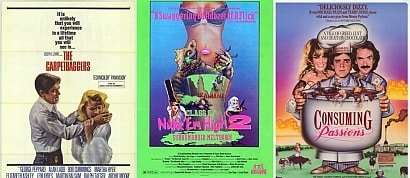Immaculately sticking the landing, The Lord of the Rings: The Return of the King solidifies Peter Jackson's The Lord of the Rings trilogy as arguably the greatest cinematic achievement in history; an involving, visually striking saga that continues to endure over twenty years after its release. Saving the best for last, The Return of the King is a masterpiece beyond comprehension - it is the best movie of 2003 and Jackson's crowning achievement, surpassing even the most optimistic of expectations. With an enormous running time exceeding three hours, The Return of the King closes the esteemed trilogy without even the slightest drop in quality, as the writing, direction, editing, visual effects and score remain first-rate. In adapting J.R.R. Tolkien's final novel, Jackson (who again co-wrote the screenplay with Fran Walsh and Philippa Boyens) takes certain liberties with the source material, making it clear that this is an adaptation instead of a slavish page-to-screen translation, but the resulting movie is an emotionally resonant, dramatically satisfying crowd-pleaser, making it hard to imagine a better concluding chapter. Although Jackson again increases the story's scope and scale, he never loses sight of the material's humanity, which elevates The Lord of the Rings above lesser fantasy movies. After the Academy Awards only recognised the previous films for their technical accomplishments, The Return of the King took home eleven Oscars, including Best Picture, with the film winning in every category for which it was nominated.
Without any recap or flashbacks, The Return of the King dives straight into the story, making it essential for viewers to be familiar with the earlier instalments. Picking up soon after The Two Towers, hobbits Frodo (Elijah Wood) and Samwise (Sean Astin) continue their journey to Mordor to destroy the treacherous One Ring, guided by Gollum (Andy Serkis). Gollum still greatly desires the ring and plans to reclaim it after betraying the hobbits, while Sam's unshakable distrust for the emaciated creature continues to grow. Meanwhile, after the sacking of Isengard and the Battle for Helm's Deep, hobbits Merry (Dominic Monaghan) and Pippin (Billy Boyd) reunite with Aragorn (Viggo Mortensen), Gandalf (Ian McKellen), Legolas (Orlando Bloom) and Gimli (John Rhys-Davies), returning to Edoras with King Théoden (Bernard Hill). Upon deducing that Sauron's forces intend to strike Gondor's capital of Minas Tirith, Gandalf rides to the city to warn the corrupt steward, Denethor (John Noble), of the impending attack. With Gondor's forces including Boromir's (Sean Bean) brother, Faramir (David Wenham), Gandalf begins encouraging the city to prepare their defences, and he signals for Rohan's assistance. However, Denethor staunchly opposes Théoden's arrival as it will bring the return of Aragorn, who is Isildur's heir and the rightful King of Gondor.
Reminiscent of The Two Towers, The Return of the King cross-cuts between several narrative strands and groups of characters that eventually coalesce throughout the movie, and the editing remains smooth and fluid, maintaining momentum while building to an astonishingly emotional conclusion. With a different editor overseeing each instalment, The Return of the King reunites Jackson with long-time editorial collaborator Jamie Selkirk (Bad Taste, Meet the Feebles, Dead Alive, Heavenly Creatures, The Frighteners), and the cross-cutting remains astute. When the Battle of the Pelennor Fields begins, the movie rarely lets up, leading to relentless combat while never neglecting the all-important human element. Despite an intimidating running time of over three hours, The Return of the King does not feel torturously overlong or fatiguing. With Jackson working through ample narrative material, and with Jackson and Selkirk working to impeccably shape the final cut, the film possesses a storytelling economy not often glimpsed in movies of this length. The extended edition adds another 50 minutes to the experience, with the film clocking in at just over four hours, not including credits. Although Jackson prefers the theatrical cut, the extended edition adds a few beats that are crucial for narrative coherency, including a final confrontation with Saruman (Christopher Lee) and Gríma Wormtongue (Brad Dourif), plus the Witch-king breaking Gandalf's staff during the Battle of the Pelennor Fields. For my money, the extended edition better serves the sprawling story, and it is the definitive way to experience The Return of the King.
Jackson amplifies the stakes with each instalment as the conflicts grow increasingly larger, and The Return of the King continues this. The Return of the King is an all-out war movie, with all remaining factions of men banding together against the armies of Mordor to prevent Middle-earth from falling into darkness. There was a tremendous sense of loss throughout the Battle for Helm's Deep in The Two Towers, but the losses throughout The Return of the King are devastating, with Sauron's forces ruthlessly slaughtering hundreds of soldiers from Gondor and Rohan, making viewers wonder if any free people will remain after Sauron's defeat. With important characters dying during the course of the trilogy, a nail-biting sense of tension permeates the battles, as it is unclear who will survive. Within the restrictions of a PG-13 rating, Jackson conveys the horrors of battle and conflict with an astonishing body count and incredible intensity. The extended edition adds more violence to the combat sequences, and it never feels like Jackson is pulling any punches for the sake of the MPAA. The Siege of Minas Tirith and the Battle of the Pelennor Fields, which occur one after the other, represent the movie's action centrepiece, and Jackson pulls out all the stops with a mind-blowing sequence that tops the scope of Helm's Deep while remaining focused on the characters. In addition to providing emotional stimulation, the eye candy is unbelievable, with Mordor's assault including armoured trolls, catapults, gigantic elephant-like creatures, and Ringwraiths riding on large, winged fell beasts that assault the city from the air. Jackson even indulges his horror sensibilities when the Orcs launch decapitated heads at Minas Tirith. However, the action is more than just bombastic noise and death, as the battles involve strategy and intelligence, and they coherently progress while providing key narrative developments.
Although the first two Lord of the Rings films contain countless standout moments, Jackson inarguably tops everything with the Ride of the Rohirrim, which endures as one of the best film scenes in cinema history. From Théoden's inspiring, fearless speech (delivered with stirring zeal by the note-perfect Bernard Hill) to Howard Shore's evocative, exhilarating music, plus the technical execution, the sequence is a sensational crowd-pleaser, with the riders showing outstanding courage in the face of indescribable danger. Théoden riding down the line of riders and tapping each spear with his sword results in a tremendous emotional swell and an overwhelming sense of honour. Similarly, Aragorn's speech at the Black Gate also triggers immediate goosebumps as he leads a last alliance of men against the forces of Mordor to draw Sauron's gaze away from Frodo. One cannot overstate the power of Shore's music, as the composer turns seemingly unremarkable moments into triumphant and exciting sequences with his orchestral accompaniments, such as the lighting of the beacons that signal Rohan to ride to Gondor's aid. Shore's score is note-perfect, alternating between ethereal and exciting, with the music becoming as synonymous with Middle-earth as the New Zealand locations.
Blockbusters with gigantic budgets were not uncommon in 2003, with films like Waterworld, Titanic and Armageddon each approaching the $200 million mark. Consequently, it is all the more miraculous that The Return of the King only cost a comparatively modest $94 million, as the technical presentation is impeccable. Cinematographer Andrew Lesnie again captures the breathtaking New Zealand scenery with visual elegance, incorporating sweeping aerial shots to emphasise the production's incredible scale (see the Nazgul descending on Minas Tirith from the air) while also coherently capturing the frenetic battles. The director of photography consistently finds stunning screen artistry, even in minor scenes. Although a visual continuity runs throughout the Lord of the Rings trilogy, each instalment still feels like a distinct and proper film with a recognisable aesthetic identity. Indeed, the scenery and colour palette change to reflect the overarching story as each film introduces us to new cities and locations around Middle-earth. Nevertheless, it is hard to approach the movies as separate entities; instead, they represent three pieces of an exquisite whole that add up to more than the sum of its immaculate parts.
With the events of The Return of the King taking place in vast locations, most notably the white city of Minas Tirith, the combination of practical sets and digital extensions is flawless. Jackson primarily uses enormous miniatures (or "bigatures") and forced perspective techniques instead of outright CGI, resulting in a tangible aesthetic that helps everything feel real and lived-in. Although there is ample green and blue-screen work (such as the Mount Doom interiors), a vast portion of The Return of the King was filmed on location. Not all of the compositing stands up to contemporary scrutiny (in a wide shot during Aragorn's coronation, green-screen is visible around the edges of several extras), but it nevertheless remains sufficiently convincing, with no shots detracting from the film's sheer magic or emotional power. Indeed, despite considerable advancements in special effects technology over the last two decades, the Lord of the Rings trilogy still looks fantastic, especially with CGI often wildly varying in quality in 2024 due to unfeasible demand and insufficient time.
Gollum remains an outstanding CGI miracle: he's a fully digital character with soul and emotion, convincingly overcoming the "uncanny valley" feeling that was prevalent at the time and for many years afterwards. With Serkis again delivering an extraordinary motion-capture performance as the haunting yet endearing creature, the subtle expressions and movements make Gollum feel more authentic, and it is often difficult to believe the character is entirely computer-generated. The prologue details Sméagol's transformation into Gollum, and it is hard to ascertain the precise moment when the digital character replaces Serkis in prosthetic makeup. Equally effective is the grotesque, digitally-created Shelob, a giant spider that lives in Cirith Ungol and feasts on anything unfortunate enough to cross her path. Even by 2024 standards, the CGI Shelob looks enormously convincing, while the scenes of Frodo navigating her unsettling lair are genuinely chilling and feel like something from a horror film. The Return of the King features more special effects shots than any of its predecessors (in fact, it has nearly twice as many VFX shots as The Two Towers), but large parts of the film receive no computer assistance, with the intricate costumes, incredible sets and elaborate makeup enflaming our imaginations.
With the characters continuing to grow and progress over the trilogy, the ensemble cast remains ideal, effortlessly handling the nuances and requirements of their respective roles. There is a distinct cadence and a beautiful poeticism to the dialogue, and, thanks to the performers, it all sounds wholly natural instead of contrived. Front and centre here are Elijah Wood and Sean Astin as Frodo and Sam. The Return of the King powerfully portrays the physical, mental and spiritual exhaustion of their journey - as they approach Mount Doom, all vestiges of cleanliness, happiness and energy are gone, replaced with intense fatigue and haggard faces. The resultant emotion is overpowering, and the actors are up to the task, never setting a foot wrong. Gandalf, meanwhile, plays a more prominent role in these proceedings, and McKellen (who received an Academy Award nomination for his performance in The Fellowship of the Ring) emanates gravitas, warmth and a sense of regal authority as the great wizard. The Return of the King also gives Gandalf more to do on the battlefield, where he leads Gondor's army and fights the Orcs using his sword and staff instead of mere magic. Mortensen also takes on more responsibility as Aragorn, and he remains a perfect embodiment of the reluctant king, who is a skilled warrior and a humble ruler.
Bloom and Rhys-Davies continue to impress as the duo of Legolas and Gimli, and it is difficult to hold back tears as the competitive pair at long last vocalise their friendship in the face of almost certain death. The actions of all the characters carry more weight and significance here because of the amount of time we have spent with them in the preceding films, making it even more poignant to see Merry and Pippin express their desire to fight despite their small stature, or Eowyn bravely stand up against the intimidating Witch-king of Angmar to protect Théoden. Boyd makes a huge impression as Pippin, with The Return of the King introducing more nuance and emotion as the burden of the adventure finally takes its toll on the hobbit. Boyd even shows off his remarkable vocal talent in one scene as Pippin sings for the selfish, short-sighted Denethor while Faramir leads a squad of Gondorian soldiers in a fruitless attempt to reclaim Osgiliath. Speaking of Denethor, Australian actor John Noble is terrific in the role, seemingly teetering on the edge of insanity while unable to face the reality of the situation facing him.
The Return of the King's prolonged epilogue has become a pop culture joke (see 2005's Kiss Kiss Bang Bang), but Jackson needed time to properly wrap up the story, especially with such a vast ensemble of characters and many narrative strands to resolve. In Tolkien's The Return of the King novel, over 100 pages remain after the ring's destruction, which would translate to over an hour of screen time. The elongated epilogue once again reiterates that The Lord of the Rings is a story more about people than fantasy or action, and the ensuing catharsis is overwhelming. Additionally, one of the film's underlying themes relates to the loss of innocence, and the ending of The Return of the King explores the ostensible impossibility of returning to one's old life after a traumatic adventure. Although Sam's last words of dialogue in the movie's final scene seem insignificant, his proclamation of, "Well, I'm back" refers to his metaphorical and physical return to the Shire, whereas the mental adjustment was not as easy for Frodo. This material reflects the experiences of war veterans whose lives were irrevocably changed by the battlefield, which is unsurprising considering that Tolkien fought in the First World War. If anything, the epilogue is not long enough (more scenes were shot but remain unreleased). Indeed, the appearance of the end credits triggers an immediate sense of melancholy as they signify the end of an amazing adventure. Annie Lennox's original song Into the West accompanies the credits, and it adds even more emotional weight to the beautiful illustrations of the actors (drawn by the trilogy's conceptual designer, Alan Lee) during the all-important curtain call.
With each passing year, it becomes clearer that The Lord of the Rings represents the pinnacle of cinema, with the industry growing increasingly worse in subsequent years as digital technology took over and agendas hijacked production integrity. The Lord of the Rings was produced at just the right time when CGI was one tool in an endless arsenal of filmmaking techniques, shooting on celluloid was still commonplace, and before Hollywood became obsessed with subverting expectations and reimagining source material using diversity checklists. Jackson and his crew were merely concerned with creating the most coherent, dramatically satisfying and exciting adaptation of Tolkien's works, retaining his spirit and tone without relinquishing artistic integrity or inserting additional messages or themes. After all, Tolkien despised allegory. Simply labelling The Lord of the Rings: The Return of the King as a film feels like an injustice; it is an experience that practically transcends the medium, delivering awe-inspiring visual spectacle, grandiose imagination and overwhelming emotion, and the fact that it still remains at the forefront of pop culture consciousness is a testament to the trilogy's unmatched staying power. Indeed, for many fans, The Lord of the Rings is more of a spiritual experience than just a movie. Although this reviewer is a fan of Jackson's The Hobbit trilogy, it does not come close to recapturing the magic of The Lord of the Rings. It is doubtful that anything ever will.
10/10
 Login
Login








